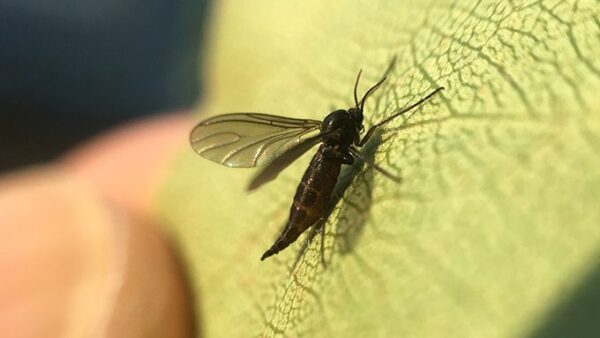How to Get Rid of Gnats can be a real pain, especially when they invade your living space or garden. If you’re tired of swatting at these pesky little bugs, you’re in the right place! This article will explore practical strategies for eliminating gnats and fungus gnats using easy and safe methods. So, let’s get started!
Understanding Gnats
What Are Gnats?
Gnats are tiny, flying insects that can be nuisances in our homes and gardens. They belong to various families, with some species causing more trouble than others. Whether it’s the common fruit fly or the notorious fungus gnat, they all share one common trait: they love to invade spaces that aren’t welcome.
Types of Gnats
Common Types
Common types include fruit flies, drain flies, and fungus gnats. Each type has its own habits and habitats but thrives in moist environments.
Fungus Gnats
Fungus gnats are especially troublesome for houseplant enthusiasts. They lay their eggs in the soil, and their larvae feast on plant roots, which can cause significant damage to your beloved plants.
Life Cycle of Gnats
Gnats have a short life cycle, usually lasting a few weeks. They start as eggs, hatch into larvae, and mature into adults. Understanding this life cycle is critical to effective control, as targeting each stage can help eliminate the problem faster.
Identifying Gnat Infestations
Signs of Gnats
The first step in dealing with gnats is recognizing the signs of an infestation. You might notice small flies buzzing around your kitchen or garden. Another telltale sign is the presence of larvae in the soil of your houseplants.
Differentiating Between Gnat Types
Not all gnats are the same. Identifying whether you have fruit flies, drain flies, or fungus gnats can help you choose the best method to eliminate them.
How to Get Rid of Gnats
Prevention Tips
Keeping Your Space Clean
The best defense against gnats is a good offense! Keeping your living area tidy is crucial. Wipe surfaces regularly, dispose of trash properly, and avoid opening food.
Managing Indoor Plants
If you have houseplants, be cautious when watering. Overwatering creates a perfect breeding ground for fungus gnats. Let the top inch of soil dry out between waterings to deter them.
DIY Remedies
Vinegar Traps
One effective method to catch gnats is using a vinegar trap. Simply fill a bowl with apple cider vinegar, cover it with plastic wrap, and poke small holes in the top. The sweet scent will lure them in, but they won’t be able to escape!
Soap and Water Solution
Another excellent DIY remedy is a soap-and-water solution. Mix a few drops of dish soap with water in a spray bottle. Spray the solution directly onto the gnats to kill them on contact.
Commercial Solutions
Gnat Traps
If DIY solutions aren’t your thing, consider investing in commercial gnat traps. These sticky traps are designed to capture adult gnats and can be placed near infested areas for best results.
Insecticides
Insecticides may be necessary for more severe infestations. Look for products labeled explicitly for gnats, ensuring they are safe for indoor use if needed.
How to Get Rid of Fungus Gnats
Understanding Fungus Gnats
Fungus gnats thrive in damp environments, particularly in potted plants. If left unchecked, they can quickly become a significant annoyance.
Best Practices for Control
Drying Out Soil
To combat fungus gnats, let the soil dry out between waterings. This disrupts their breeding cycle and helps protect your plants.
Using Beneficial Nematodes
Consider introducing beneficial nematodes to the soil. These microscopic worms target gnat larvae, effectively reducing their population without harming your plants.
Maintaining a Gnat-Free Environment
Regular Cleaning Routines
Staying proactive is vital. Establish regular cleaning routines to minimize the chance of gnats returning. This includes cleaning surfaces and checking plants and other potential breeding grounds.
Monitoring and Follow-Up
After implementing your gnat control strategies, look for signs of their return. If you notice a resurgence, you may need to repeat some treatments or adjust your methods.
Conclusion
How to Get Rid of fungi gnats, especially fungus gnats, doesn’t have to be daunting. You can reclaim your space from these pesky intruders with preventive measures, DIY solutions, and commercial products. Remember to keep your environment clean and dry and your plants healthy to keep them at bay. For more detailed guidance on how to get rid of gnats, check out our dedicated page at Docoro.Shop. You can also find more information on how to get rid of fungus gnats there. Happy pest control!
FAQs
1. How do I know if I have fungus gnats?
Look for tiny flying insects around your plants and check the soil for larvae. They’re often more visible near the surface.
2. Are vinegar traps effective for all types of gnats?
Vinegar traps are particularly effective for fruit flies but can also catch some fungus gnats.
3. How often should I water my plants to avoid fungus gnats?
Let the top inch of soil dry out before watering again. This helps keep the environment less hospitable for gnats.
4. Can I use insecticides indoors safely?
Yes, but always read the label to ensure it’s safe for indoor use, especially around children and pets.
5. What’s the best way to prevent gnats from coming back?
Maintain a clean environment, manage your plants’ watering schedules, and regularly check for signs of gnats to catch any issues early.
